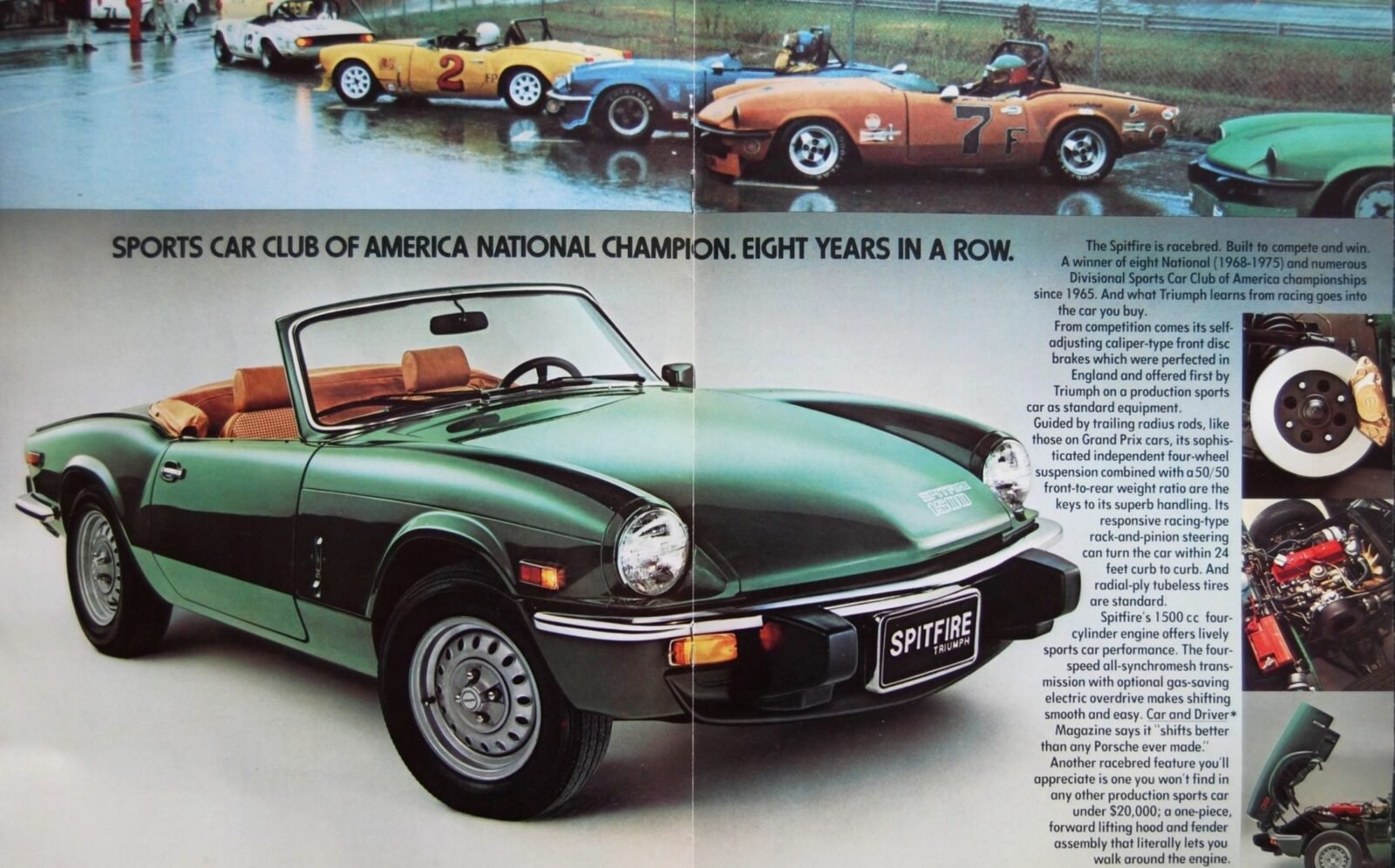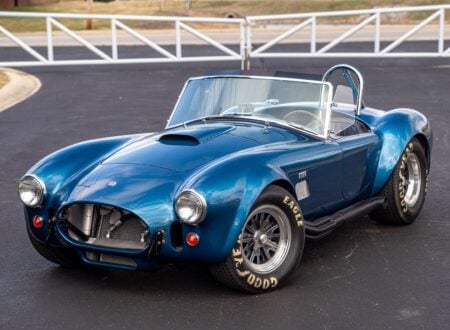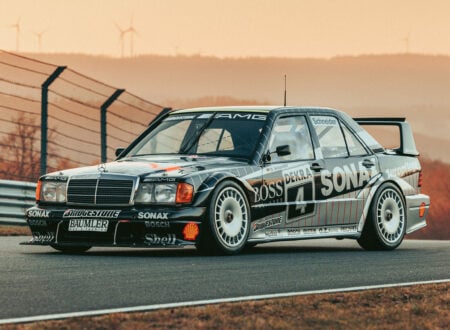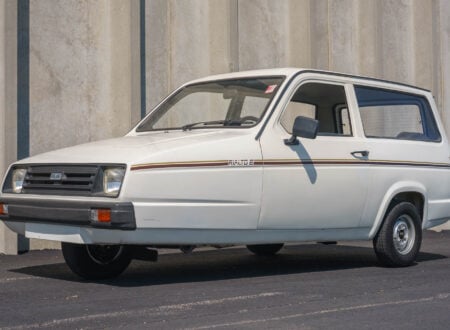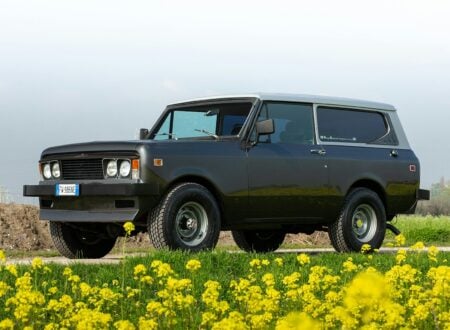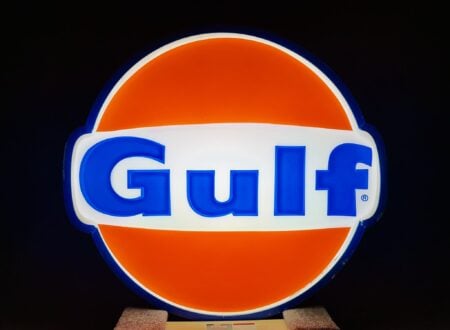The Triumph Spitfire – An Introduction
The paradoxical thing about the Triumph Spitfire is that it didn’t spit fire. The original Supermarine Spitfire fighter aircraft was powered by a huge supercharged Rolls-Royce V12 engine and was fitted with up to eight machine guns so that it truly did spit fire from engine exhausts and guns.
The Triumph Spitfire sports car however had a diminutive four cylinder engine, no machine guns, and only spat fire if the engine was so out of tune that it caused a backfire in the exhaust. It was however much less expensive to buy, a lot cheaper to run, and it was enormous fun.
Triumph and The Blitz
During the “Blitz” of 1940 the industrial city of Coventry had rather a lot of bombs dropped on it by the Nazi Luftwaffe in their efforts to bomb Britain into submission. Although this had worked quite well for the Nazis in other parts of Europe it didn’t in their efforts to conquer Britain: the pesky British just seemed to get more and more determined. Bombing Britain turned out to be about as profitable as poking a stick into a hornet’s nest expecting the frightened hornets to flee away.
Sadly Coventry was a city where many of the classic British cars were made and as a result of the Nazi bombing some were destroyed, notably Triumph, who had a long history of making beautiful motor cars. What was left of Triumph, which wasn’t much more than the name, was purchased by Sir John Black’s Standard Car Company on December 31, 1945.
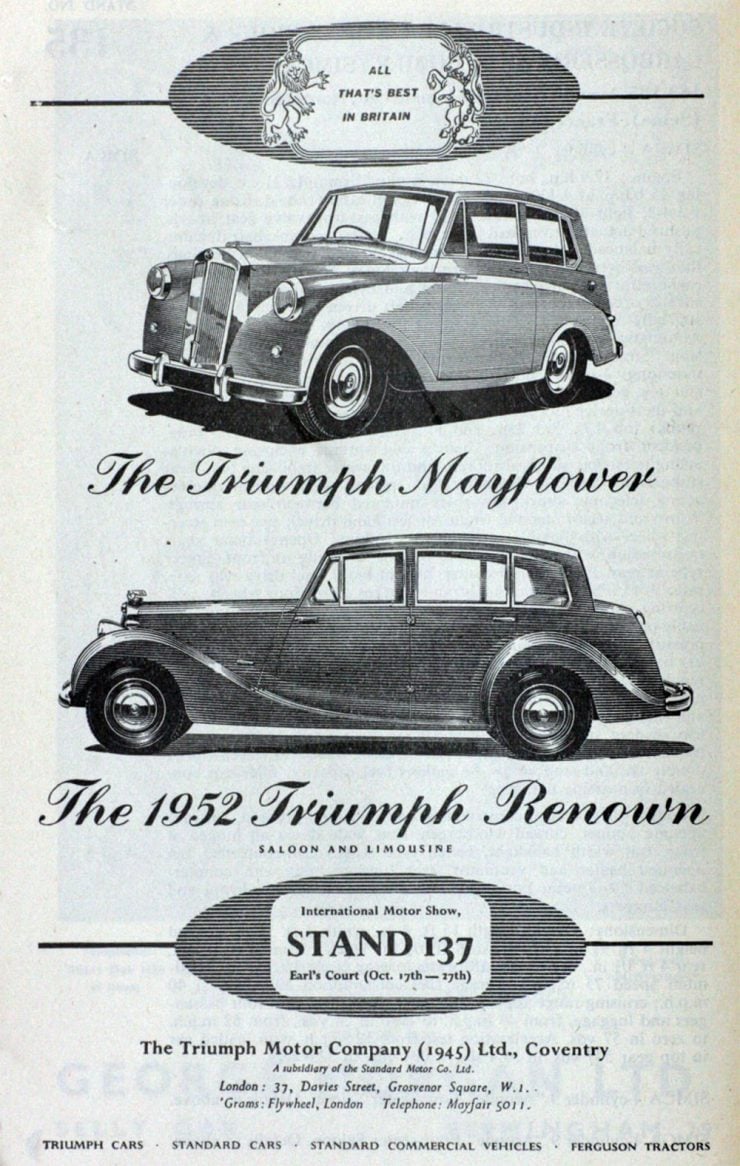
Sir John Black understood Britain’s dire post-war financial need to export or perish and he looked to the American market as a place where he would really like to sell cars. Other British car makers were seeing this also and Jaguar had debuted their six cylinder XK DOHC engine in a hand built sports car based on their sedan chassis, but fitted with a hand made sports car body.
It was an instant success and although Jaguar had not actually intended to put that car into production they found they had so many customers with open checkbooks that turning away all that lovely money was unthinkable: thus it was that the Jaguar XK120 went into production, with actor Clark Gable taking delivery of one of the first examples.
Earlier pre-war “SS” Jaguar cars had been based on chassis from Sir John Black’s Standard Car Company. So he reasoned that if Sir William Lyons of Jaguar could create sports cars that would sell like hotcakes in the US then he could do that as well. His first effort was the Triumph TRX concept car, which was basically a sleek body built on a Standard Vanguard sedan chassis and engine.
People did not line up with open checkbooks for that one however.
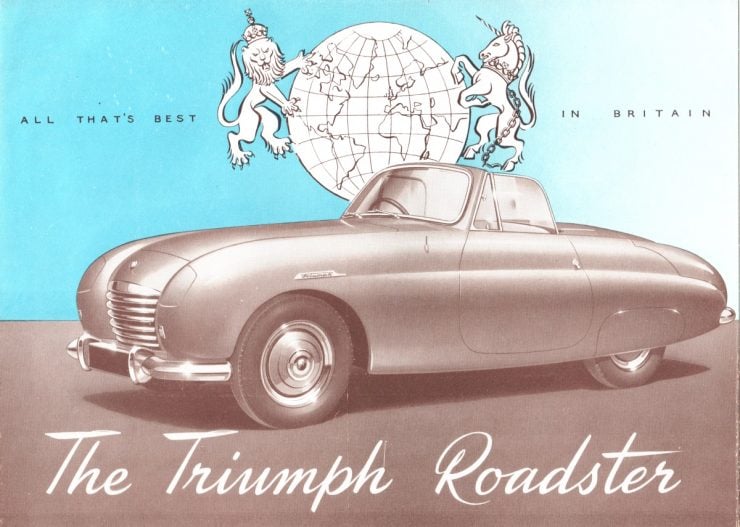
The design team went back to work and so at the London Earls Court Motor Show of 1952 they showed their second effort: the 20TS. This was a car that looked rather more like a beast and not at all like a beauty a socialite might drive.
It was a car that could compete with Donald Healey’s 1951 Austin-Healey 100 and it led to the creation of the Triumph TR2. In fact a 20TS was taken to the Jabbeke motorway in May 1953 fully speed prepared and driver Ken Richardson, sitting on a cushion because they did not want the extra weight of a seat in the car, belted the car down the road to achieve 124.899 mph. Richardson was not belted in coincidentally: no seat, no seat-belt.
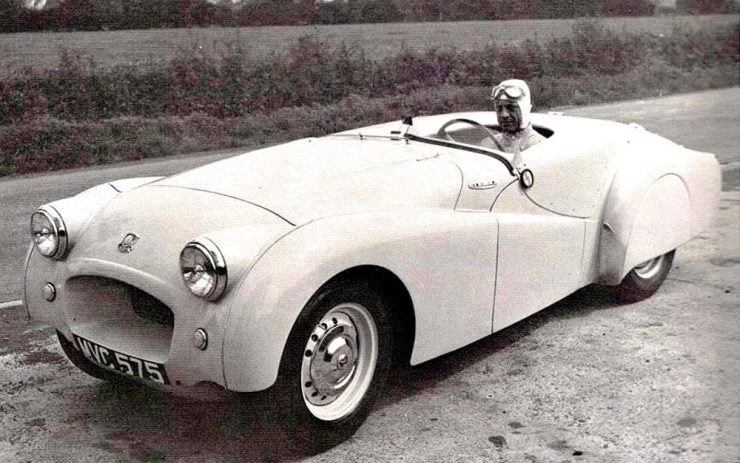
Triumph had their sports car that was a direct competitor for the Austin-Healey 100 and sales of the Triumph TR2 and its successors were good, but in 1958 Austin-Healey debuted their sports car for the not so monied masses, the Frogeye/Bugeye Austin-Healey Sprite.
Small, based on the diminutive Austin A30/A35 sedan the Sprite was marketed as “something a chap could keep in his bike shed”: lots of chaps (and chappettes for that matter) decided that having their very own boy racer sports car was too much of a temptation to be sensible about.
The Sprite did not have a boot/trunk, it just had a stash area behind the seats, something like a miniature Aladdin’s Cave for soft luggage. The Sprite had quite minimal weather protection also, side curtains for the soft top rather than heavy and expensive to make wind-up windows with their winding mechanism.
The Sprite did have seats however, unlike Triumph’s 20TS Jabbeke speed car, because not all chaps have the raw courage of a Ken Richardson, and passengers would expect a car to have seats, even a sports car.
In September of 1960 the chaps at Triumph decided they could do rather better than Donald Healey’s little Sprite and so they started work on their own small sports car, naming the project “Bomb”.
The new car was to be based on a shortened version of Triumph’s small sedan, the Triumph Herald, which boasted a body design by Italian designer Giovanni Michelotti. A shortened Herald chassis was sent to Michelotti and he created the body style. Meanwhile the engineering team at Triumph built a test “mule” using a shortened Triumph Herald, basically a two seater Triumph Herald, to get the mechanics and suspension sorted out.
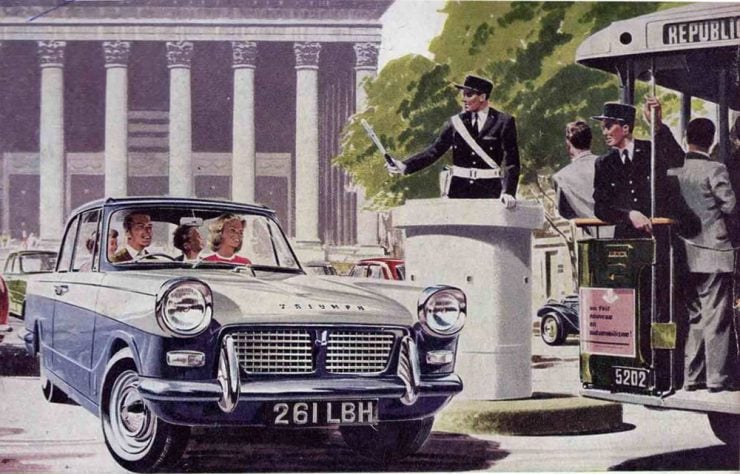
Although other car makers were shifting to unibody construction Standard-Triumph did not have the financial resources to support that transition: and in any event regarded it as unnecessary.
Small production sports car makers were using a chassis rather than a unibody, Lotus, TVR, and Morgan being examples. The Triumph Herald was built on a backbone chassis with the body made as a separate item and this made it an ideal foundation for the Bomb.
Where the Triumph Herald’s chassis had outriggers these were removed for the Bomb so the bucket seats could be set nice and low. This required the fitting of strong sills to provide structural stiffness but was a sound design.
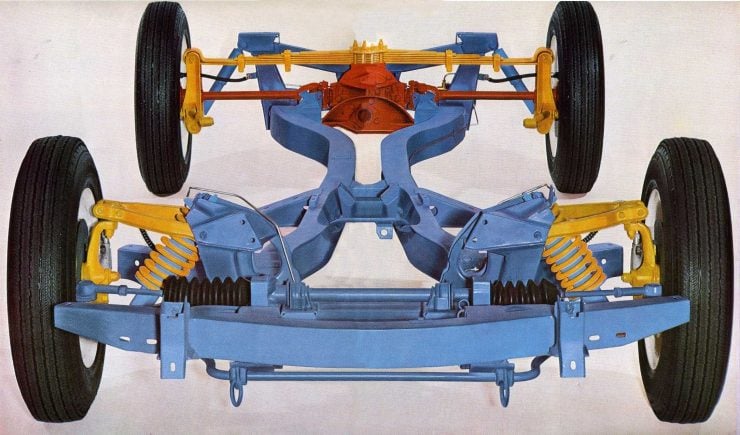
The project was to be short-lived however as Standard-Triumph were in financial trouble as car sales had slumped as a result of the 1956 Suez Crisis. Petrol rationing had been resumed in Britain as a result and people either stopped buying cars or had very small ones, such as the BMW Isetta bubble car.
This was the political situation that led to the creation of the Austin/Morris Mini, and it was also the cause of Standard-Triumph’s financial woes. By December 1960 work on the Bomb was stopped and the Leyland bus and truck company made a takeover bid for Standard-Triumph, which they succeeded in completing in April of 1961.
The Bomb was put into a corner in the factory and covered up with a cloth like a body awaiting burial, but it was not to be forgotten. When a Leyland executive visited the factory he asked what was hidden under the sheet and when the prototype sports car was revealed he was a very happy camper. He could see the potential, and the Bomb was unexpectedly given a new lease of life: on July 13, 1961 the Bomb development project was underway again.
The Triumph Spitfire 4 (1962-1964)
In getting the Bomb from prototype into production not many changes turned out to be necessary: the Triumph design team had achieved a great deal in the few months they’d had to develop the project and Giovanni Michelotti’s work was brilliant.
This was in part due to the fact that the car could be built on a shortened and modestly modified production Triumph Herald chassis, an advantage the chassis provides that a unibody does not.
The engine was the stock 1,147cc (70 cu. in.) inline four cylinder OHV from the Triumph Herald with a couple of SU carburetors bolted on to improve its breathing ability, the engine then being given a bit of a tweak here and there to make it more sports car like.
The Herald’s front drum brakes were dispensed with and replaced with some nice efficient discs to ensure the little beast could stop as well as go. The suspension was fully independent and originated from the Triumph Herald; at the front were wishbones with coil springs and at the rear were swing axles using a transverse leaf spring bolted to the top of the differential.
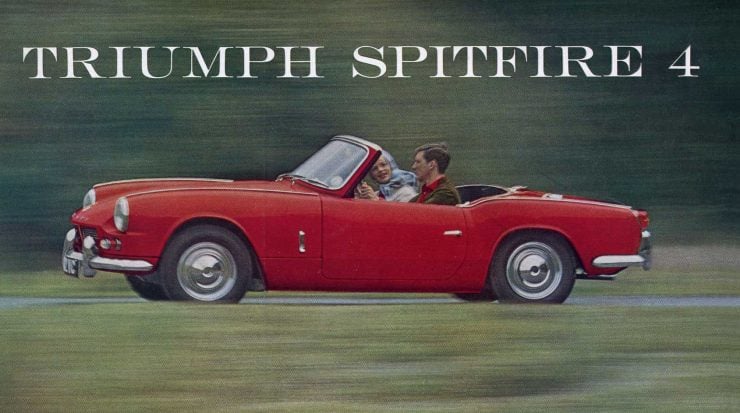
The body was made to offer significant advantages over the new car’s main competitors, the greatly re-modeled Austin-Healey Sprite and its twin sibling the MG Midget. The new Spitfire was fitted with a rather awkward to raise soft top, wind-up side windows, exterior door locks, and quite comprehensive instrumentation to give it a hint of an aircraft cockpit look.
The name chosen for the car was not Bomb, but instead took the name of the iconic fighter of the Battle of Britain, the Spitfire. The Bomb had a new identity, reminiscent of the Second World War fighter aircraft which featured in the “Biggles” comic books that so many of the young men and women who would buy a Spitfire would have grown up reading.
This first model was known as the Spitfire 4, simply because it was fitted with a four cylinder engine, unlike its Battle of Britain namesake which had a Merlin V12. The Spitfire 4’s engine produced 63 bhp @ 5,750 rpm and torque of 67 lb/ft @ 3,500 rpm. This gave the little car a standing to 60mph time of 16.4 seconds and a top speed of 92 mph.
While these figures are not particularly impressive they don’t really convey the feeling of the Spitfire. With its seats set very low the car gave the impression it was going rather more quickly than it really was, so low seats, an aircraft like cockpit, and a nice engine warble, all combined to make the little Spitfire a very fun machine. It was also affordable at the petrol pump as it delivered a frugal 31 miles to the Imperial gallon.
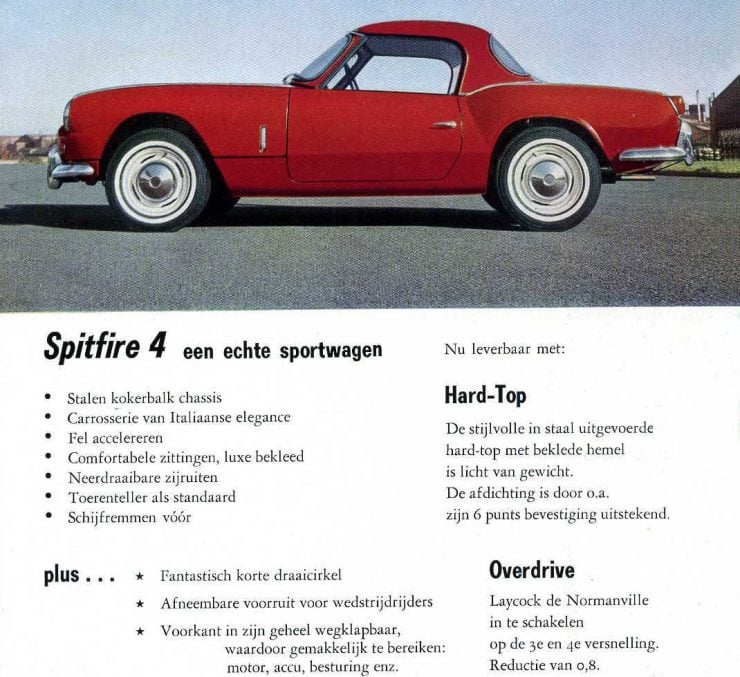
The Spitfire 4 had a few optional extras available for it, a heater/demister, removable hard-top, wire wheels, and in its last year of production a Laycock de Normanville electric overdrive. In addition to these were the performance kits available from dealers. These included twin dual throat Weber 40DCOE carburetors, a high compression cylinder head, high lift camshaft, and for the really serious petrol heads such extensive engineering items such as stronger pistons, con rods, crankshafts, clutch and close ratio gearbox kits from the Triumph Vitesse.
This sort of thing had considerable appeal to a generation raised on Biggles comics and Meccano sets.
The Triumph Spitfire Mark II (1965-1967)
The Mark 2 version of the Triumph Spitfire was introduced in 1965 and provided some relatively minor improvements over the original Spitfire 4, which was now often referred to as the “Mark 1”.
The engine power was increased to 67 bhp @ 6,000 rpm and British models were treated to a diaphragm spring clutch while North American market models retained the original coil spring one, and were also fitted with ACDelco distributors as opposed to the British which stayed with Lucas.
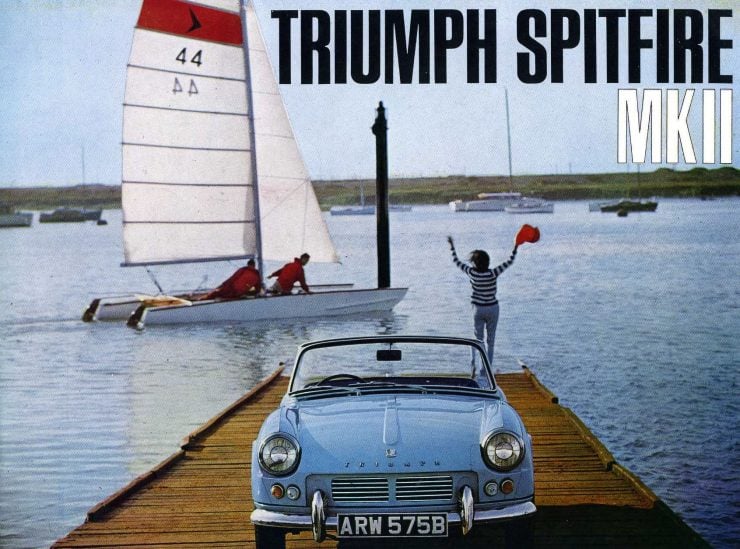
The interior trim of the Mark 2 was upgraded to include carpet in place of the original rubber mats, redesigned seats, and the covering of exposed metal panels with trim. There were of course the obligatory new badges and grill to give the car a “new” look.
The Triumph Spitfire Mark III (1967-1970)
The Mark 3 was a major upgrade, the Spitfire was subject to some significant competition from its Austin-Healey and MG Midget rivals and it needed to pull some rabbits out of the hat to keep up with the opposition.
The car also had to comply with new bumper height regulations and this was accomplished by a two fold strategy of raising the bumper on the bodywork and by raising the front springs. This combined effect imparted a quite different look to the car and it was referred to as the “bone in the teeth” model.
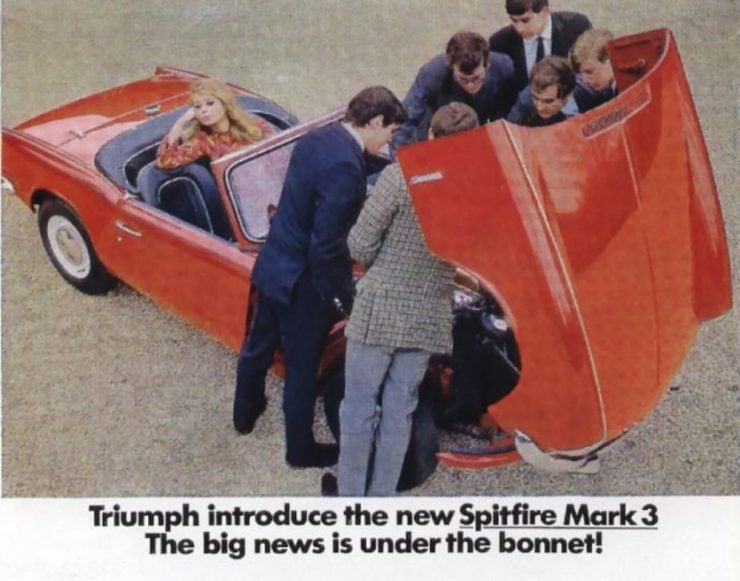
In their efforts to beat the competition Triumph greatly improved the folding soft top so it was much easier to deploy. The dashboard was done in wood veneer to significantly bring the look of the interior upmarket. The engine of the Spitfire was increased in capacity to 1,296cc which was the same as on the Triumph Herald 13/60 and 1300 models.
The Spitfire engine with its twin SU carburetors delivered 75 bhp @ 6,000 rpm with 75 lb/ft torque @ 4,000 rpm. The car’s performance benefited from the increase in power with its standing to 60 mph time down to 13.4 seconds and its top speed up to 95 mph. The car’s electrical system was also changed over from traditional British positive earth to the more universal negative earth.
1968 was to produce happy news, and more difficult news for the Triumph Spitfire. The celebratory news was that the 100,000th Spitfire was personally driven off the production line by Standard-Triumph’s General Manager George Turnbull.
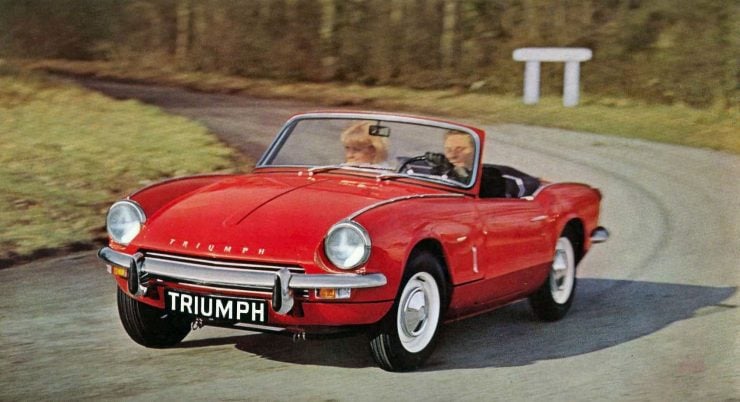
The more difficult was the introduction of new vehicle safety standards and exhaust emissions regulations for the US market. Cars exported to the US constituted 45% of Spitfire production and so the cars needed to be able to comply with US standards. In 1968 the Spitfire’s braking system was upgraded to a dual hydraulic circuit with failure warning light: this was also to become a requirement in Australia under the Australian Design Rules (ADR).
1968 was also the year that British Leyland, who owned Standard Triumph, acquired ownership of British Motor Holdings which brought MG, Austin, and Jaguar/Daimler all into the same company. This meant that the Spitfire, Sprite and Midget were all now competing with each other from within the one company.
The Spitfire had to comply with new emissions standards for 1969: this meant that the engine’s compression ratio had to be reduced to 8.5:1, the camshaft was re-profiled, and ignition timing had to be adjusted. So the upshot of these regulations was that the engine had to be made less efficient, which meant less performance and increased fuel consumption.
The cars affected by these changes are nowadays referred to as “Federal Spitfires” and their engine power was down to 68 bhp with torque reduced to 73 lb/ft. The car’s standing to 60 mph time increased to 14 seconds, which was still pretty good by the standards of the time.
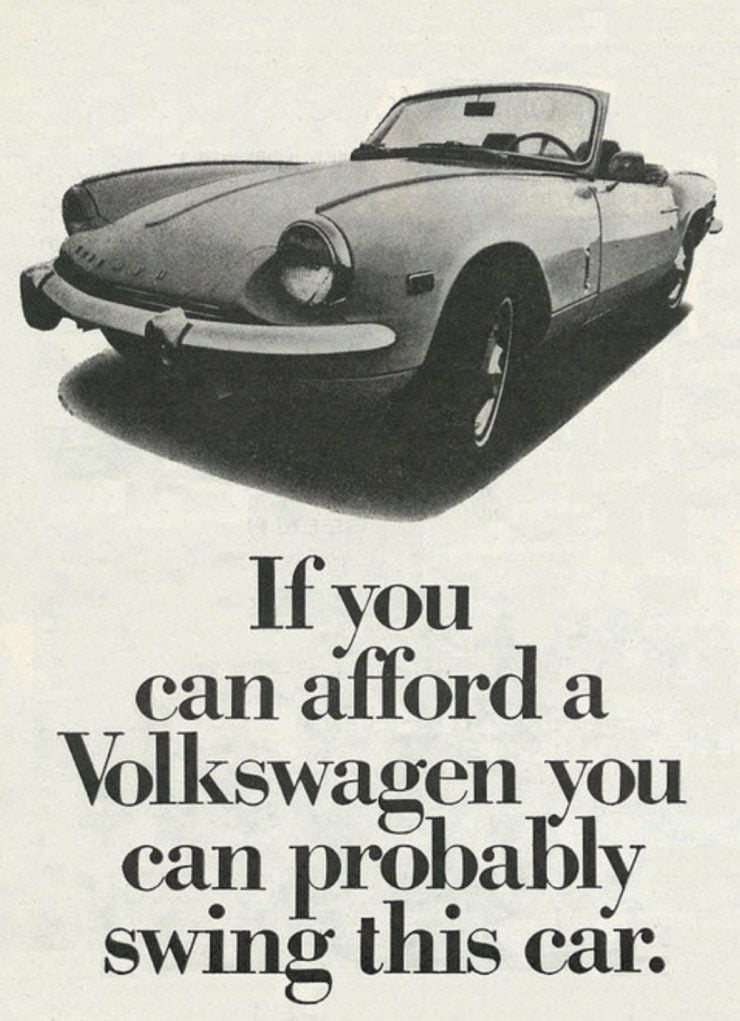
Also in 1969 the Spitfire had to provide headrests to guard against occupant neck injury in the event of a rear end collision. This required a redesign of the car’s seats and was a welcome improvement. The car’s dashboard lost its attractive wood veneer which was replaced by a black plastic one for US market cars, and the instrumentation was relocated to be directly in front of the driver.
Of particular note is that the transverse leaf spring with swing axles rear suspension was kept all through to the Mark III. This system produced much the same effect as it did on the Volkswagen Type 1 and the early Chevrolet Corvair, although on those two the effects were more exaggerated because of the rear engine causing the weight distribution to be very rear heavy.
The Spitfire had much more even weight distribution, but the vice of the swing axles was still able to rear its ugly little head. This problem occurs most markedly if the driver lifts off the throttle in a corner or brakes. The weight transfers to the front outside wheel and as it does so the rear outside wheel is lifted and as the swing axle forces a shift to positive camber it “tucks under” which can cause a switch to dramatic oversteer or a roll-over.
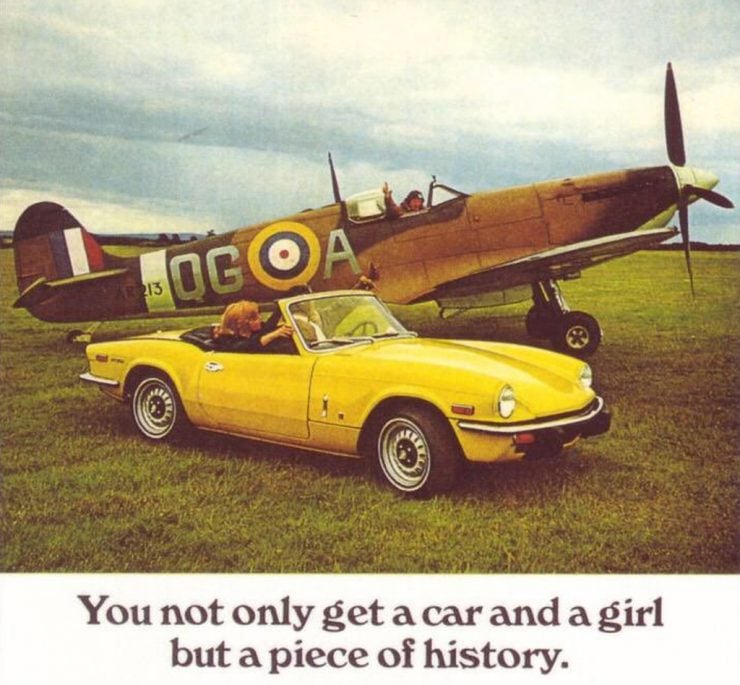
This suspension was widely criticized and drivers who wanted to get the best from the handling of their cars installed camber compensator rear suspension kits to fix the problem, just as more technically minded Corvair and Volkswagen owners did.
The Triumph Spitfire Mark IV (1970-1974)
The Mark IV was a major revision of the Triumph Spitfire. The bodywork was redesigned by Giovanni Michelotti and among the changes the weld line on the top of the front wings/fenders was eliminated along with the chrome finisher strips that covered them.
By this stage rather old school chrome headlight surrounds were removed and replaced by body color ones, the grill became black plastic and was complimented by black plastic bumper under-riders. The wheel-arches were stylishly flared and the door handles became neatly flush fitted. The windscreen height was increased by two inches.
At the rear of the Spitfire was perhaps the most dramatic change with the rear end being given a cut-off style which brought it into line with the rear end styling of its stablemates the Triumph Stag and the restyled Triumph 2000. This would be the same sort of style that the Triumph Dolomite of 1972 would also be given so the Triumph cars looked like a part of a coordinated family.
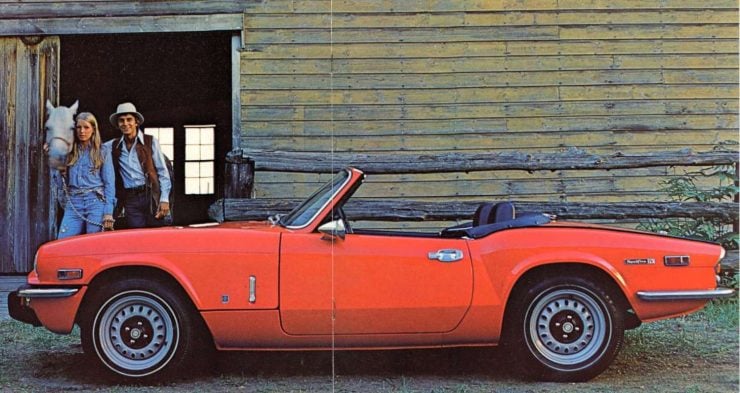
For the Mark IV the instrumentation was moved from the center of the dashboard to being directly in front of the driver for all markets. Many features that had previously been optional extras became standard fittings on the Mark IV Spitfires. These cars had a heater/demister as standard, black sun visors, and three-point seat belts.
The hardtop was greatly improved and included opening rear quarter-lights while the folding soft top was treated to a plastic cover to keep it neatly packed away. The switch for the optional electric overdrive was relocated to the top of the gear lever, perhaps inspired by the red button for the passenger ejector seat fitted to James Bond’s Aston Martin DB5 in “Goldfinger”.
The Mark IV also finally got synchromesh on first gear, something that British car makers seem to have had a near religious aversion to in the same way that British motorcycle manufacturers resisted installing electric starters.
The engine of the Mark IV was mostly the same as used in the Mark III but due to the desire by British Leyland to rationalize component parts and spare parts inventory the Mark IV engine used the heavier con-rods from Triumph’s six cylinder engines. These heavier con-rods affected the engine’s free revving characteristics but did not reduce power. Engine power remained at 75 hp (SAE) but was now quoted in published material as 63 hp (DIN). So all that actually changed was the measurement method for published data, not the engine’s actual power output.
The Mark IV was a tad heavier than the Mark III however, which contributed to the car feeling a bit less spritely, and added to that the final drive ratio was changed from 4.11:1 to 3.89:1 which helped with motorway cruising, but not with standing start acceleration should you want to race a guy in a Porsche away from the traffic lights.

The big fix on the Mark IV was to finally cure the swing axle vice, something that arguably have been done much earlier. The fix was remarkably simple, instead of the whole rear suspension leaf spring assembly being bolted to the top of the differential casing only the bottom-most leaf was, leaving the others free to move around the central axis. The rear suspension was further improved late in production by the widening of the track, improving stability.
The performance of the Mark IV was lively for European specification cars: standing to 60 mph time was 12.5 seconds and top speed was 97 mph. In 1972 however the engine was detuned which brought the top speed down by a couple of miles per hour but, more tellingly, increased the standing to 60 mph time to 14.5 seconds.
In 1972 for the US market Triumph began fitting a larger 1,493cc engine which was created by lengthening the stroke of the older 1,296cc engine. This US version was fitted with a single Zenith Stromberg carburetor and had the necessary anti-emissions control equipment installed on it.
The Triumph Spitfire 1500 (1974-1980)
In 1972 Triumph rationalized production by using the US market 1,493cc engine in all markets, but only applying the emissions controls to the US market engines, and tuning up the engine for British and European markets thus creating the fastest Spitfire yet, other than the car’s fighter aircraft namesake of World War II.
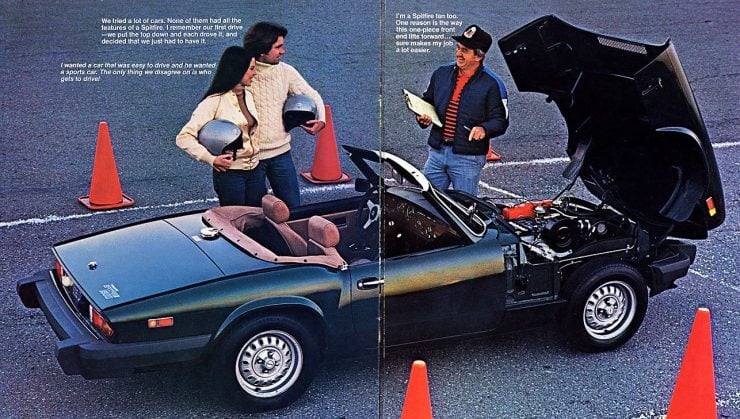
The car fitted with this new engine was called the Spitfire 1500 and its engine produced 71 bhp (DIN) @ 5,500 rpm and torque of 82 lb/ft. This engine was mated to a Morris Marina gearbox with the result that the car could now actually “do the ton”, i.e. 100 mph and boasted a standing to 60 mph time of 13.4 seconds. The British and European market engine had a compression ratio of 9:1 and breathed its leaded petrol through twin SU HS4 carburetors.
The US market Spitfire 1500’s engine was given a compression ratio of 7.5:1 so it could run on the unleaded gasoline that was being phased in. It breathed through the single Zenith Stromberg carburetor and had an exhaust gas recirculating system and catalytic converter. This engine produced 53 hp (DIN) giving the car a standing to 60 mph time of 16.3 seconds.
The Spitfire 1500 had the longer swing axles and resulting wider rear track, and also had its rear suspension a little lowered to induce some negative camber, which all contributed to the car’s improved stability.
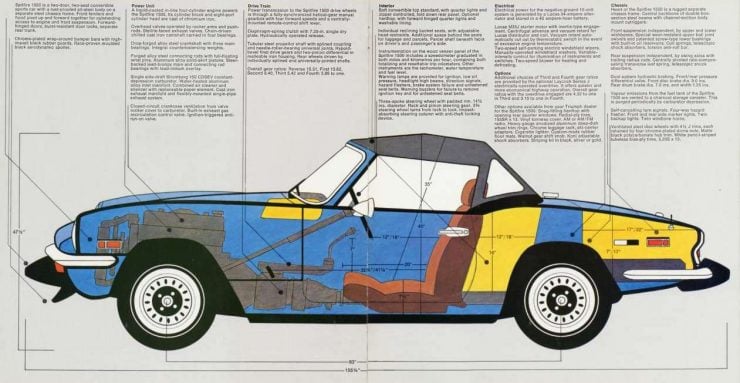
The car’s interior trim was substantially upgraded with “chequered brushed nylon centre panels” in the reclining seats and also got steering column stalk mounted controls in the 1977 upgrade. The final model had the features expected by that time including an electric windscreen washer and hazard warning lights. Wire wheels ceased to be available as an option however as the world moved on to accessory alloy wheels.
Conclusion
The Triumph Spitfire was built to be a small, inexpensive fun machine and it delivered an elegant sufficiency of enjoyment of driving and exploring wherever you fancied going. It was a car that did not attempt to deliver the terrifying levels of raw performance of such cars as the AC Shelby Cobra, it wasn’t in the same price league, nor would those who purchased a Triumph Spitfire have been looking for that from it. They were looking for a car that delivered affordable enjoyment, and it delivered that wonderfully.
The Triumph Spitfire has acquired for itself a quite dedicated enthusiast following over the years but there are also a lot of people out there for whom this was the car of their young years: a car that carries with it many memories.
It’s a car that those who were privileged to own one look back on with fondness. We can imagine a young Triumph Spitfire owner having a secret “Snoopy Moment” as he drives thinking “Here’s the World War II flying ace in his Spitfire…” – hopefully there is a little bit of Walter Mitty in all of us.
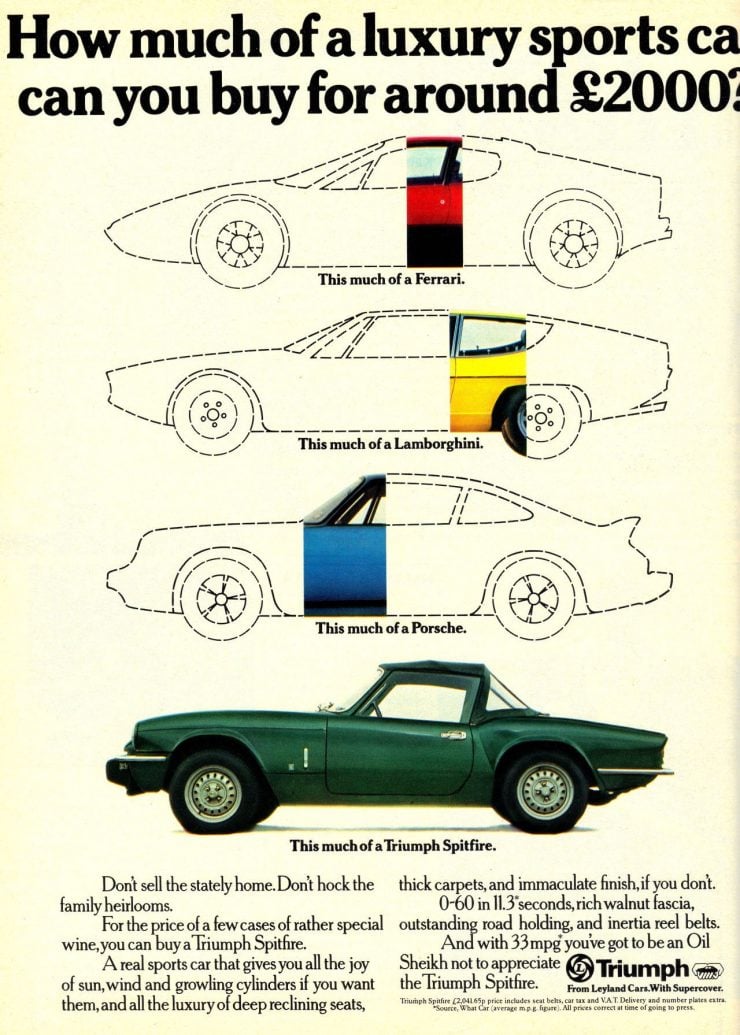
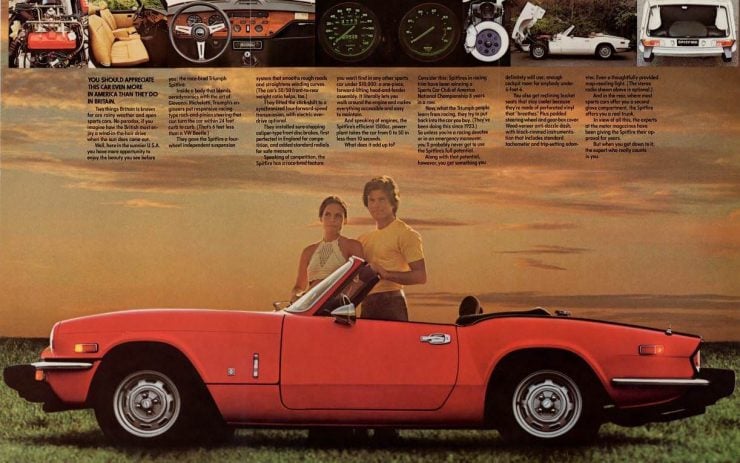
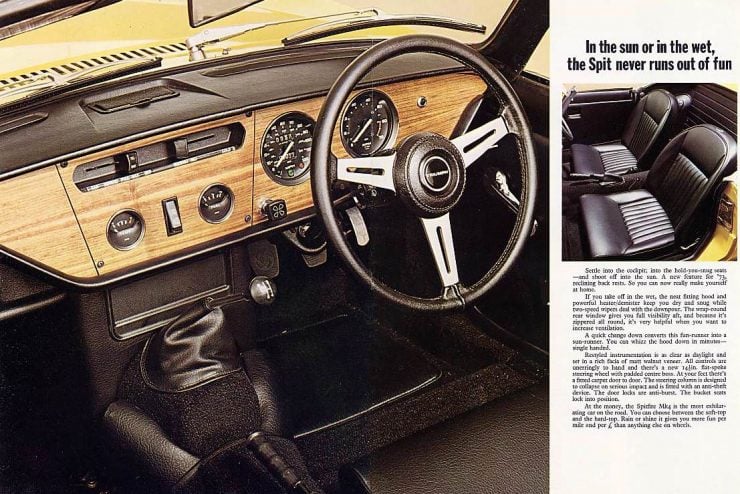
Picture Credits: Standard-Triumph, Leyland.

Jon Branch has written countless official automobile Buying Guides for eBay Motors over the years, he’s also written for Hagerty, he’s a long time contributor to Silodrome and the official SSAA Magazine, and he’s the founder and senior editor of Revivaler.
Jon has done radio, television, magazine, and newspaper interviews on various issues, and has traveled extensively, having lived in Britain, Australia, China, and Hong Kong. The fastest thing he’s ever driven was a Bolwell Nagari, the slowest was a Caterpillar D9, and the most challenging was a 1950’s MAN semi-trailer with unexpected brake failure.

